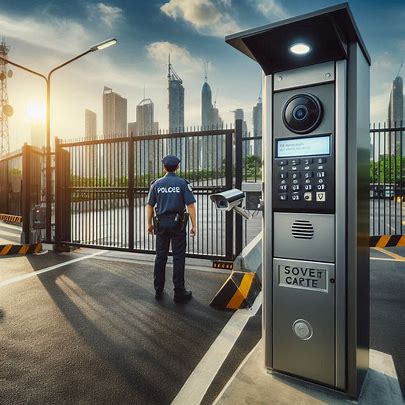Security is a top priority for any law enforcement facility. Police stations, detention centers, and training grounds require physical barriers beyond aesthetics. These fences must be functional, reliable, and designed to reduce potential threats. Strong perimeter control is essential for keeping unauthorized individuals out and maintaining internal order within sensitive zones.
One of the most effective solutions is installing durable fencing like steel or chain-link structures. These materials offer resistance against weather, wear, and tampering. For those exploring fence installation West Hartford services, experienced contractors can help design systems that meet strict law enforcement standards. That means barriers that can withstand impact, resist cutting, and provide clear visibility where necessary.
 Fencing does more than mark boundaries. It sends a clear message: this area is protected, and entry is controlled. For law enforcement, this is vital. A secure perimeter prevents escape attempts from detention areas and deters intrusion by unauthorized individuals or vehicles. This becomes even more important during emergencies when crowd control becomes a challenge.
Fencing does more than mark boundaries. It sends a clear message: this area is protected, and entry is controlled. For law enforcement, this is vital. A secure perimeter prevents escape attempts from detention areas and deters intrusion by unauthorized individuals or vehicles. This becomes even more important during emergencies when crowd control becomes a challenge.
Facilities like jails, holding cells, or impound lots often deal with high-risk individuals. Proper fencing not only supports safety but also reduces liability. It helps law enforcement focus on their core duties without being distracted by concerns about external threats.
One of the most requested features in modern fencing is anti-climb design. This includes angled tops, narrow mesh spacing, or even coatings that make it hard to grip. The goal is to stop anyone from scaling the fence quickly or without detection. It’s a strong deterrent, especially in detention centers or juvenile facilities.
Entrances and exits should be limited and monitored. Secure fencing incorporates gates with electronic locks, keypads, or even biometric systems. Some systems are also integrated with surveillance cameras or motion sensors to monitor entry in real-time. This ensures that only authorized personnel can access critical zones.
While strength is important, so is visibility. Chain-link fences provide a clear line of sight, making it easier for security personnel to observe activity outside the perimeter. It also allows for the use of exterior lighting, which helps reduce blind spots at night.
Not all fencing is created equal. Companies like Alton Fencing, Rent-A-Fence, and Cox Fence offer tailored services that suit high-security needs. These providers understand the complexities of working with government contracts and law enforcement agencies. From site evaluation to custom builds, their expertise ensures every inch of fencing works toward safety.
Partnering with contractors that stay updated on local and federal security standards is also crucial. Fencing installations must meet zoning codes, building regulations, and occasionally, military-grade benchmarks. Working with trusted names reduces the risk of compliance issues and ensures long-lasting solutions.
While security is the focus, fencing around law enforcement buildings doesn’t have to look like a fortress. Today’s designs blend function with style. Powder-coated finishes, custom colors, and sleek layouts help the fence blend in with its surroundings. This is particularly helpful for urban police departments that want to remain approachable to the community while still securing their premises.
READ ALSO: The Police’s Changing Role in Contemporary Law Enforcement
Law enforcement facilities have unique challenges when it comes to safety. Fencing is more than just a barrier — it’s a critical piece of infrastructure. From deterring unauthorized access to helping officers maintain order inside, secure fencing solutions are an investment that pays off in protection and peace of mind. As security concerns continue to evolve, so should the physical systems that protect our public servants.